Creating an indoor bonsai tree collection is more than just a hobby—it’s a meditative, artistic expression that brings nature’s beauty into your living space. The art of bonsai, originating from ancient China and refined in Japan, focuses on cultivating miniature trees that mirror their full-sized counterparts. With patience, proper care, and the right environment, anyone can start a thriving indoor bonsai collection at home.
This guide will walk you through everything you need to know—from selecting species to styling, potting, and long-term maintenance—so you can successfully grow your own miniature forest indoors.
1. Understanding the Art of Bonsai
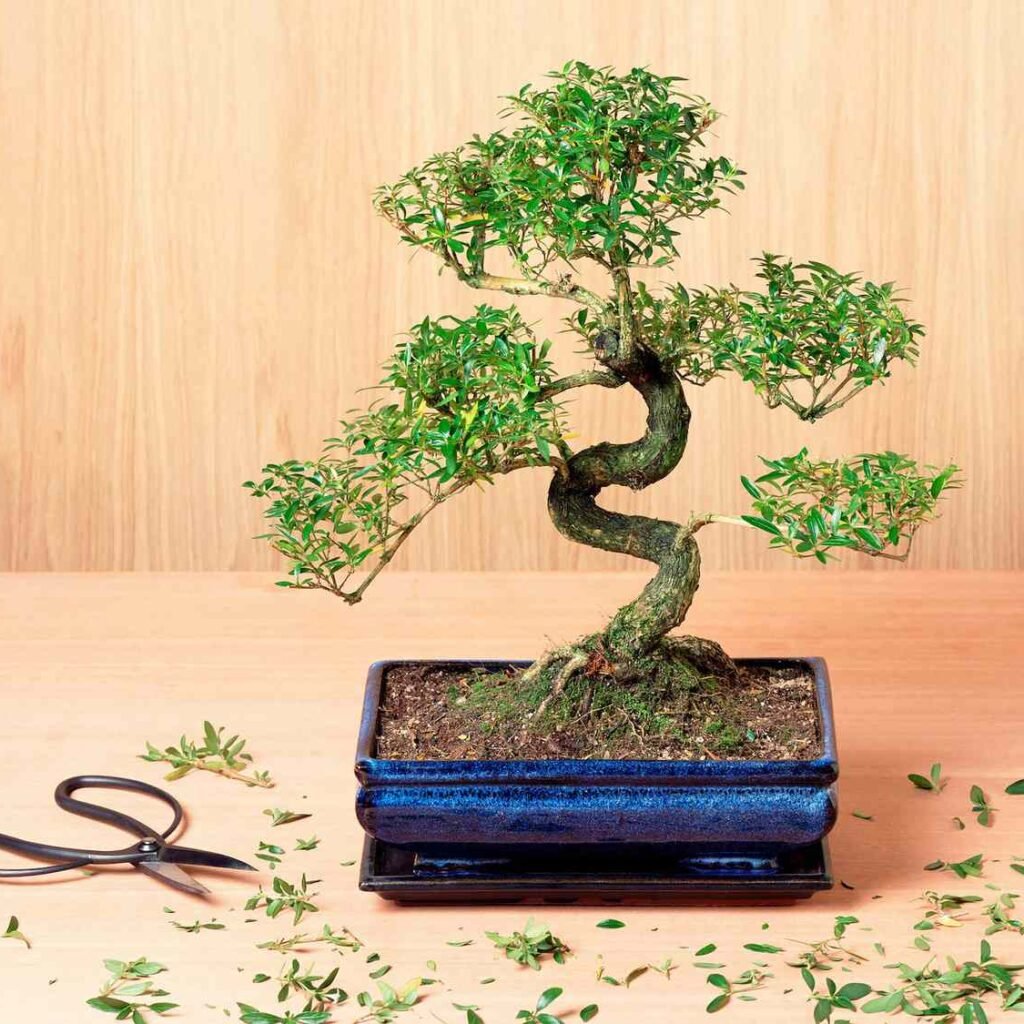
Before you begin, it’s important to understand what bonsai truly is. The word bonsai means “planted in a container.” Contrary to popular belief, bonsai are not genetically dwarf plants—they are normal trees trained to stay small through careful pruning, root restriction, and shaping.
The goal of bonsai is to capture the essence of a mature tree in miniature form, evoking a sense of age, balance, and harmony. Each bonsai tells a story, representing the relationship between nature, art, and patience.
Starting a bonsai collection involves more than planting trees in small pots—it’s about learning an ancient practice that teaches observation, discipline, and respect for growth over time.
2. Choosing the Right Indoor Bonsai Species
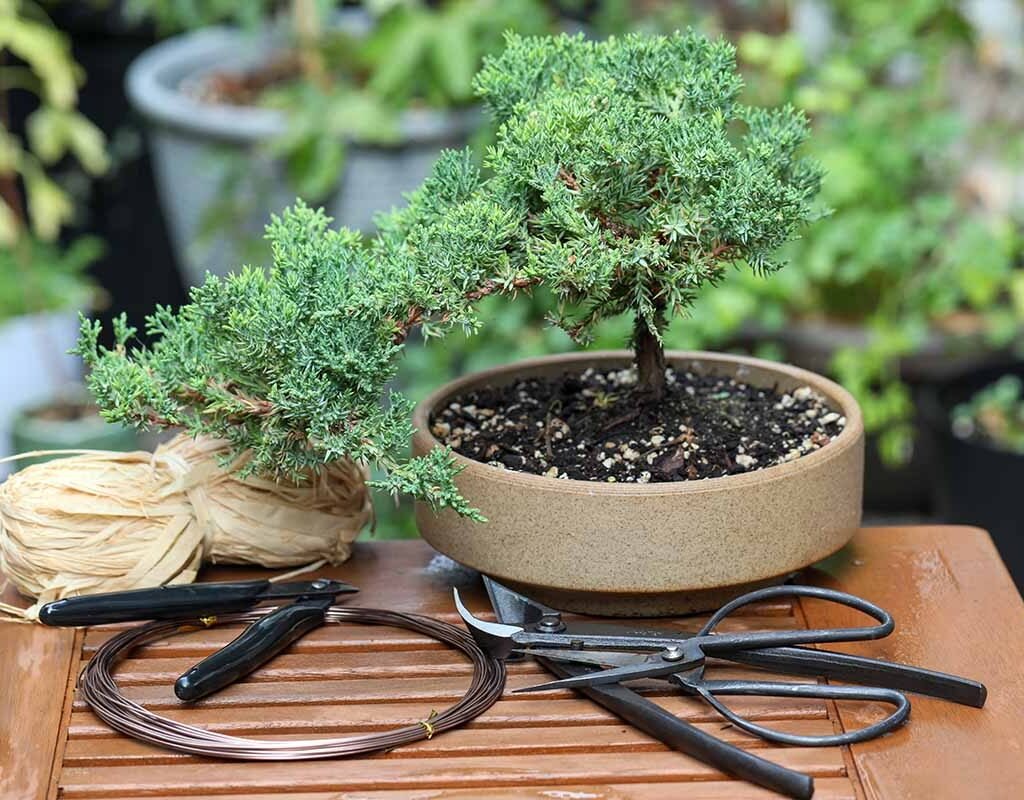
Not every tree species can thrive indoors. Since many bonsai species require natural light, humidity, and seasonal variation, indoor growers should focus on tropical and subtropical varieties that adapt well to indoor conditions.
Here are some excellent indoor bonsai options for beginners:
- Ficus (Ficus retusa or Ficus benjamina): A resilient choice that tolerates low humidity and moderate light. Ideal for beginners.
- Chinese Elm (Ulmus parvifolia): Has small leaves, attractive bark, and strong growth patterns. Great for both indoor and outdoor conditions.
- Jade Plant (Crassula ovata): A succulent bonsai that needs minimal watering and bright light—perfect for sunny windowsills.
- Schefflera (Umbrella Tree): Grows well indoors and adapts easily to pruning and shaping.
- Dwarf Pomegranate (Punica granatum nana): Offers stunning flowers and fruit, adding a touch of color to your collection.
- Serissa japonica (Snow Rose): Produces delicate white flowers and thrives in bright, humid environments.
Start with one or two hardy species before expanding your collection. Once you understand each plant’s needs, you can introduce more challenging varieties.
3. Selecting Containers and Soil
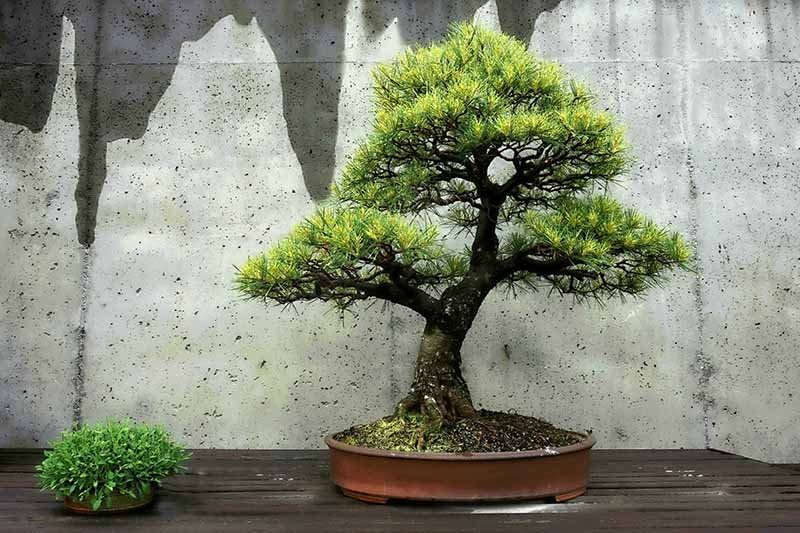
Bonsai containers are not just functional—they’re an integral part of the overall aesthetic. Choose pots that complement the tree’s shape, style, and size. Traditional bonsai pots are made of ceramic or clay and have drainage holes to prevent root rot.
Tips for choosing the right pot:
- The pot’s depth should match the size of the tree’s root ball.
- Wider pots help with stability, especially for trees with wide canopies.
- Neutral colors (gray, brown, or blue) allow the tree’s form to stand out.
Soil composition is another vital factor. Bonsai soil should provide proper aeration, drainage, and moisture retention. A good indoor bonsai mix usually includes:
- Akadama (a type of clay): For moisture control.
- Pumice: Enhances aeration.
- Lava rock: Improves drainage.
- Organic compost or bark: Retains nutrients.
You can buy ready-made bonsai soil or create your own mix depending on the species and your indoor humidity level.
4. Lighting and Temperature Requirements
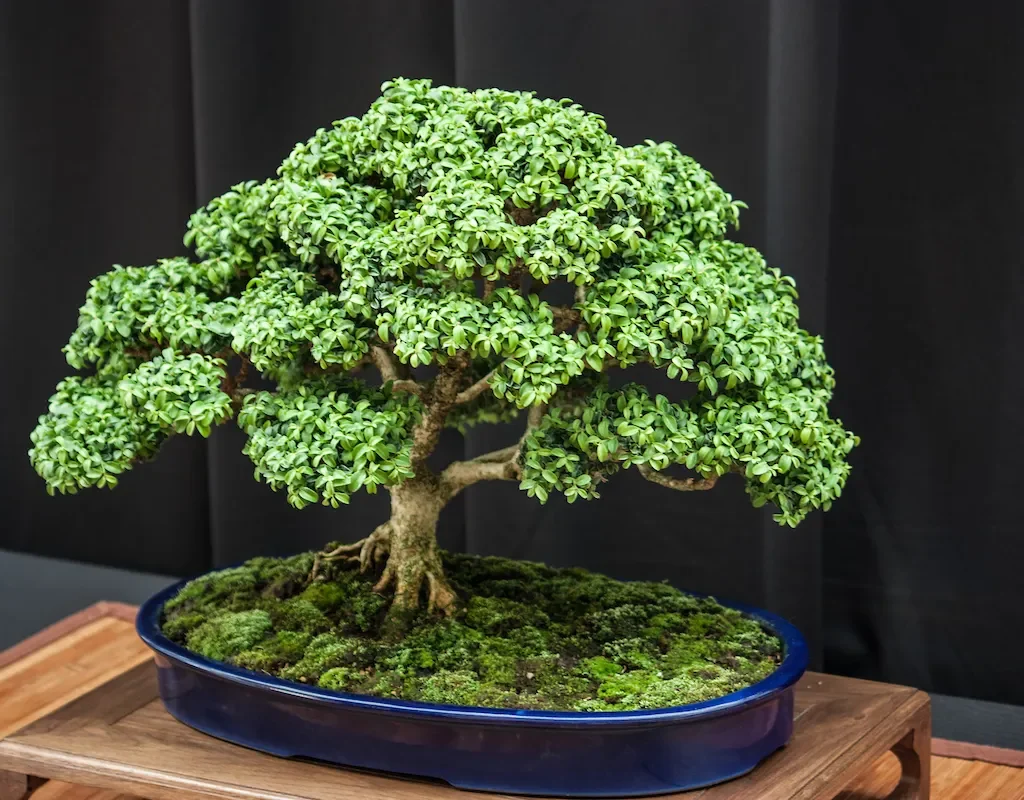
Indoor bonsai trees need bright, indirect light for at least 6 hours per day. South-facing windows work best, but if your home doesn’t receive enough natural light, you can supplement with grow lights.
Tips for optimal light and temperature:
- Place bonsai near windows but avoid direct midday sunlight that can scorch leaves.
- Maintain indoor temperatures between 60–75°F (15–24°C) for most tropical species.
- Rotate the tree weekly to ensure even light exposure.
- Avoid placing your bonsai near heating vents or cold drafts, which can cause stress and leaf drop.
5. Watering and Humidity Management
Proper watering is the key to healthy bonsai. The frequency depends on species, pot size, and indoor humidity. Unlike regular houseplants, bonsai roots are confined to small spaces, so they dry out quickly.
Watering guidelines:
- Check the soil daily—if the top layer feels dry, water thoroughly until it drains from the bottom.
- Avoid letting water sit in trays; stagnant moisture causes root rot.
- Mist leaves regularly to maintain humidity, especially during winter when indoor air is dry.
- Use a humidity tray filled with pebbles and water to improve ambient moisture around the plant.
Remember: it’s better to slightly underwater than overwater. Consistency and observation are crucial.
6. Pruning and Shaping Your Bonsai
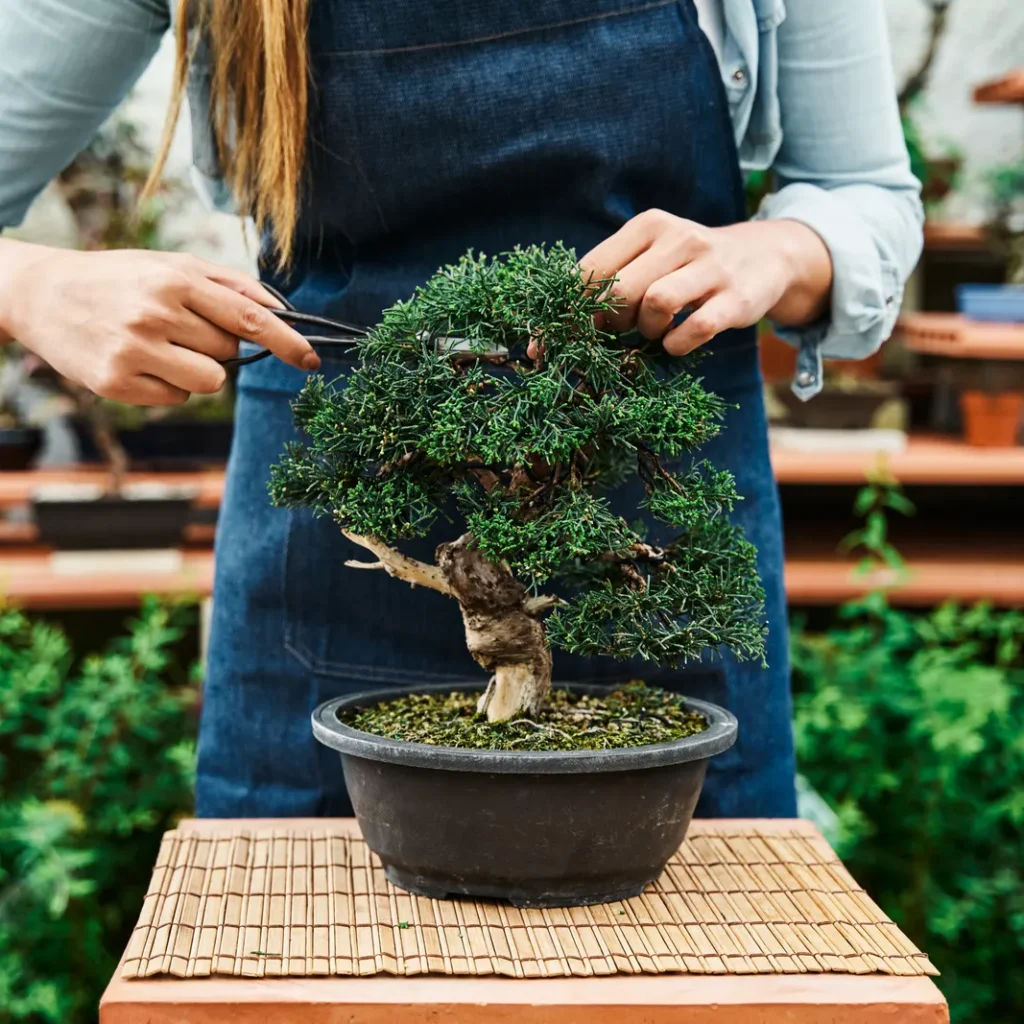
Pruning is where the artistry of bonsai comes alive. There are two main types of pruning: maintenance pruning and structural pruning.
- Maintenance pruning: Keeps the shape neat and encourages new growth. Trim back shoots once they extend beyond the desired silhouette.
- Structural pruning: Done less frequently to shape the overall design and guide growth direction.
You can use bonsai wire to train branches into artistic forms like upright, cascading, or slanting styles. However, avoid wiring young or fragile branches too tightly—it can damage the bark. Always monitor growth and adjust wiring as the tree matures.
7. Feeding and Repotting
Bonsai trees need nutrients to maintain strong roots and vibrant foliage. Since they grow in limited soil, fertilizing is essential. Use a balanced liquid fertilizer (NPK 10-10-10) every 2–4 weeks during the growing season (spring to early autumn).
In winter, reduce or stop feeding when growth slows.
Repotting is equally important to prevent root binding. Most indoor bonsai need repotting every 2–3 years. Gently trim about one-third of the roots and replace old soil with fresh bonsai mix. Spring is the best time for repotting, as new growth helps the tree recover quickly.
8. Common Challenges and How to Overcome Them
Even experienced growers encounter challenges. Here are a few common issues and solutions:
- Yellowing Leaves: Often caused by overwatering or poor drainage. Ensure proper airflow and avoid soggy soil.
- Leaf Drop: Can occur after moving the bonsai to a new location. Give it time to adjust to light and humidity.
- Pests (Aphids, Spider Mites): Treat with neem oil or insecticidal soap and increase humidity.
- Weak Growth: Indicates lack of light or nutrients. Supplement with grow lights and fertilize regularly.
Patience is key—bonsai trees grow slowly, and mistakes are part of the learning journey.
9. Styling and Display Ideas
Your bonsai collection should enhance your indoor environment. Display bonsai on shelves, tables, or windowsills where they receive sufficient light. You can also group trees of different sizes for a layered effect.
Popular indoor bonsai display styles include:
- Single specimen focus: Highlight one tree as a centerpiece.
- Miniature forest scene: Combine multiple small bonsai in one container.
- Accent plant combination: Pair bonsai with moss or small ferns for natural aesthetics.
Choose minimalist stands or Japanese-style display tables to emphasize the tree’s shape and beauty.
10. The Joy and Mindfulness of Growing Bonsai
Caring for bonsai is more than a plant-care routine—it’s a meditative practice. Each pruning cut and watering session teaches patience and mindfulness. Over time, you’ll develop a deep bond with your trees, observing how they respond to seasons, light, and touch.
Building an indoor bonsai collection isn’t about perfection—it’s about growth, both yours and the plant’s. Whether you’re nurturing a single Ficus or a forest of miniature pines, each bonsai becomes a living piece of art that reflects your care and dedication.
Conclusion
Starting an indoor bonsai tree collection brings nature, artistry, and tranquility into your daily life. With the right species, proper care, and consistent attention, you can grow stunning miniature trees that thrive for decades.
As you shape each branch and nurture each leaf, you’re not just growing plants—you’re cultivating patience, mindfulness, and a lifelong connection with nature.
So, gather your tools, choose your first bonsai, and begin the rewarding journey of transforming tiny trees into timeless works of living art.
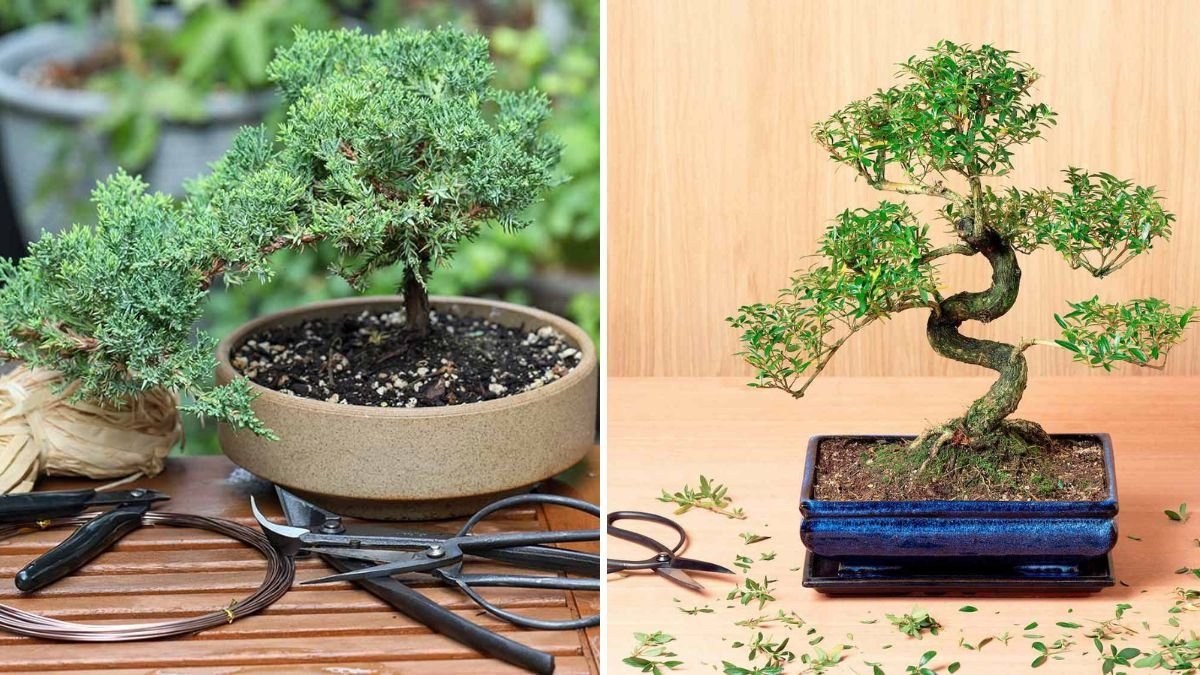




Leave A Comment